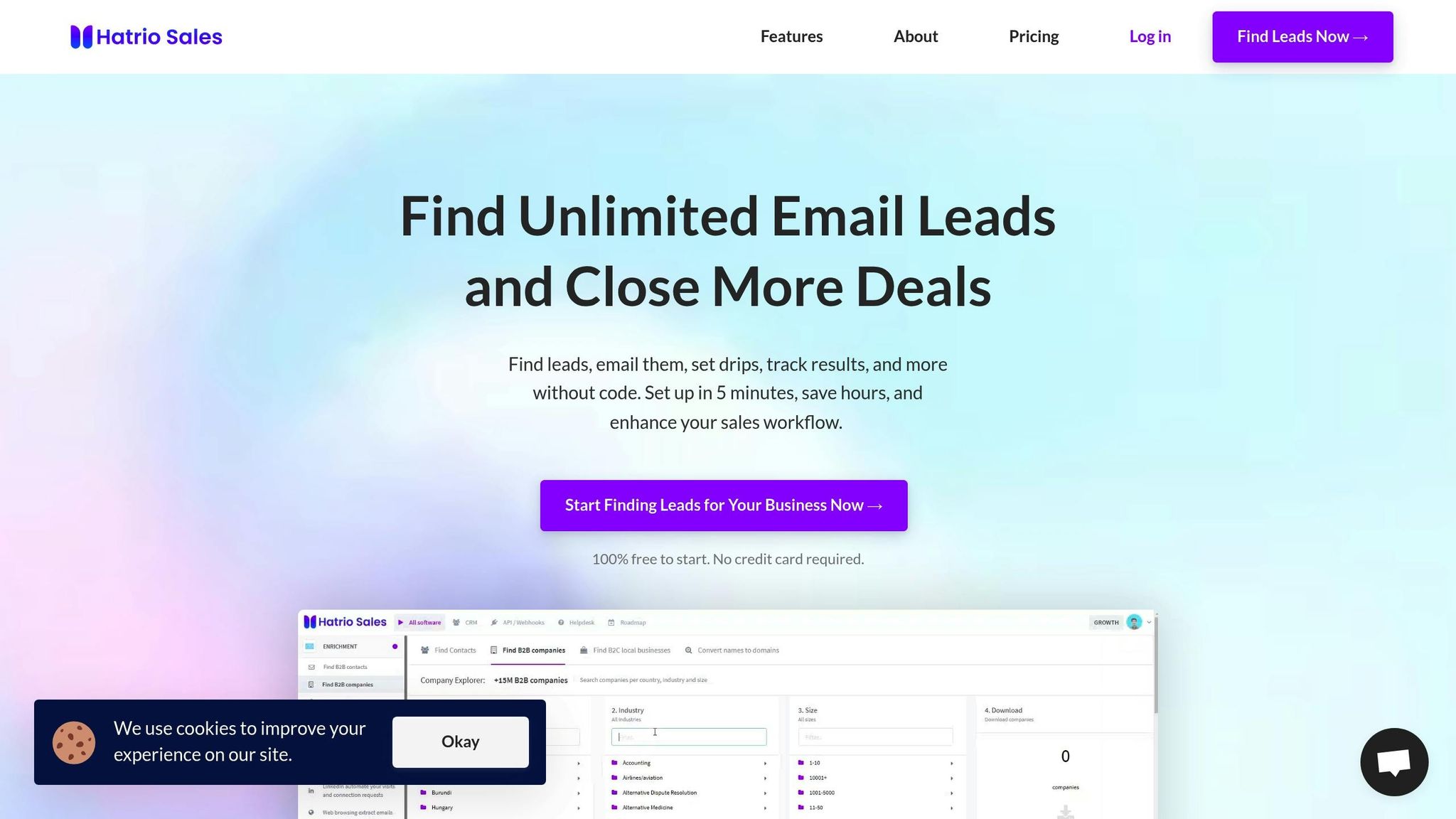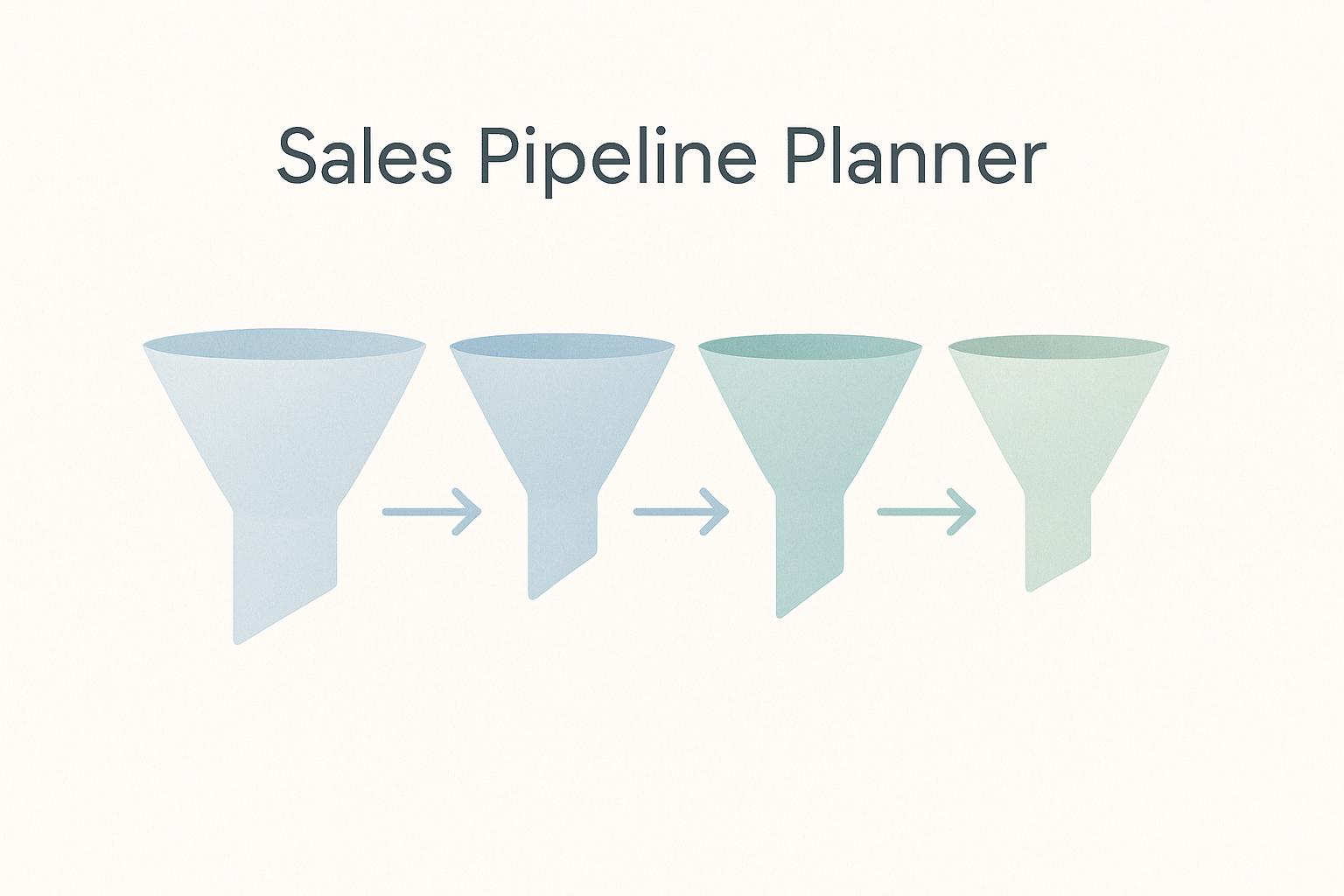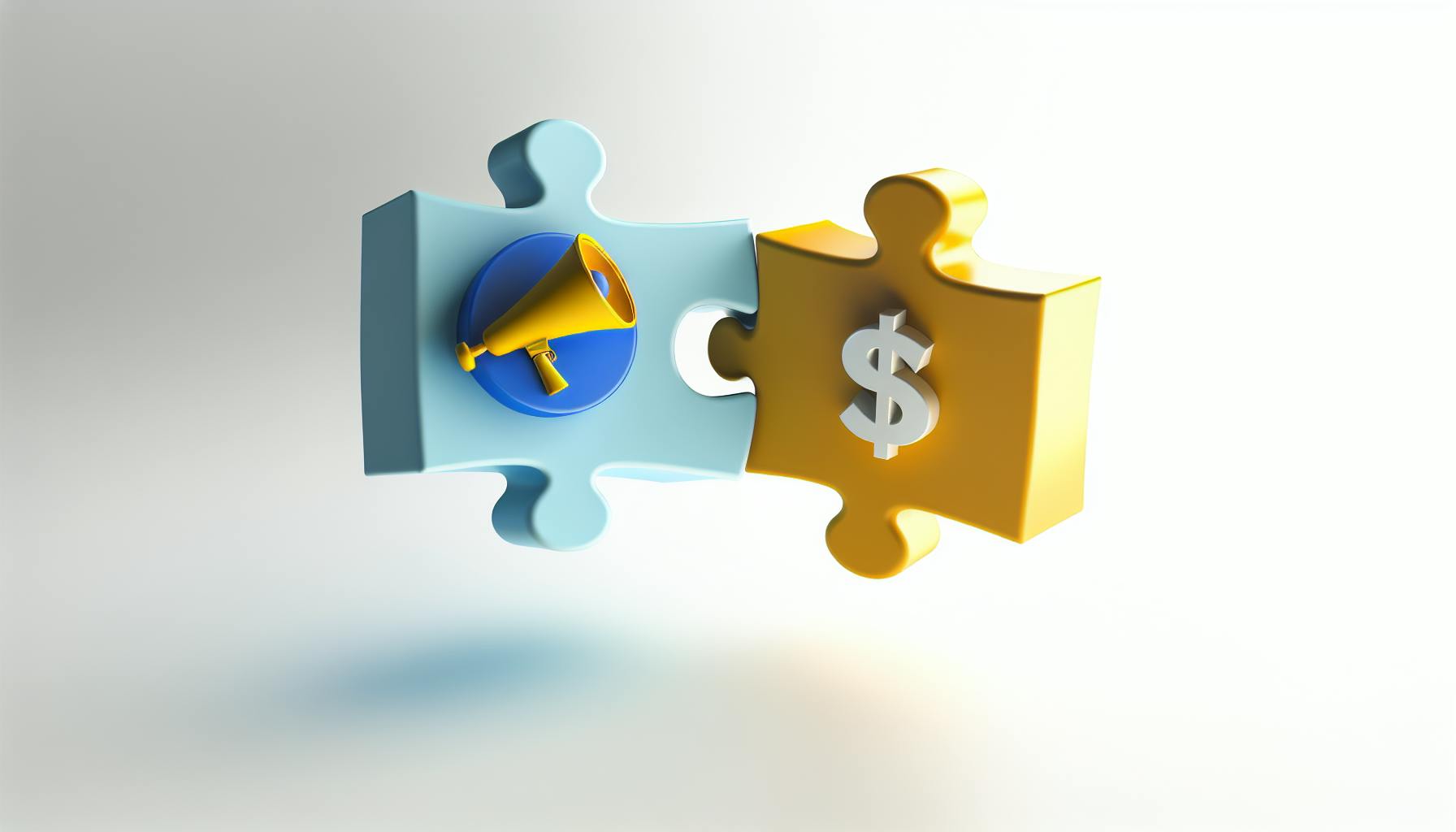AI is transforming LinkedIn lead generation by automating repetitive tasks, analyzing data to predict customer behavior, and enabling highly personalized outreach. This approach saves time, improves efficiency, and boosts conversion rates. Key strategies include:
- AI Tools: Automate prospecting, message personalization, and lead scoring. Tools like Hatrio Sales integrate LinkedIn outreach with CRM systems for streamlined workflows.
- Personalized Outreach: AI tailors messages to individual prospects, increasing response rates by up to 30%. Video outreach can boost engagement by 300%.
- Content Creation: AI assists with brainstorming and refining ideas, but human input ensures content connects emotionally.
- Lead Nurturing: Drip campaigns driven by AI adapt to prospect behavior, improving conversion rates by up to 50%.
- Performance Tracking: Metrics like ROI, conversion rates, and lead quality are essential for refining strategies.
AI simplifies LinkedIn lead generation but works best when combined with human creativity and relationship-building. Platforms like Hatrio Sales help businesses achieve this balance, driving better results without sacrificing the personal touch.
AI Tools and Technologies for LinkedIn Lead Generation
Overview of AI Tools
Modern AI tools are transforming how businesses identify, engage, and convert prospects on LinkedIn. These tools handle tasks like automating connection requests, tailoring messages, managing follow-ups, and analyzing data to predict buying behaviors. By streamlining these processes, they save time and improve efficiency.
Some standout features include the ability to manage multiple outreach campaigns simultaneously and enrich lead profiles with additional contact and company data. AI also helps refine ideal customer profiles by analyzing successful conversions, automates data collection from various sources, and customizes outreach based on individual prospect behavior.
The results speak for themselves: companies leveraging AI tools have seen conversion rates improve by up to 50%, reduced manual data entry by 60%, and achieved email open rates of 41% with click-through rates reaching 14%.
Emerging trends in this space include AI agents that act autonomously, using unstructured data to detect intent signals in real time and adapt engagement strategies on the fly. Voice technology is also gaining traction, with tools that automate phone-based lead qualification.
These advancements pave the way for comprehensive platforms like Hatrio Sales, which integrate these cutting-edge features into a unified solution.
Hatrio Sales: A Complete Solution

Hatrio Sales stands out as a one-stop platform for LinkedIn prospecting and sales workflow automation. Trusted by over 104,000 websites, it offers access to a vast database containing over 1.5 billion data points, including detailed company profiles and domain information. This wealth of data helps businesses target leads with precision.
The platform supports LinkedIn outreach across standard, Premium, and Sales Navigator accounts. It enables users to automate social media outreach, extract leads in bulk from websites, and convert social profiles, company names, domain names, and emails into qualified CRM contacts.
Hatrio Sales goes beyond lead generation with features like automated lead scoring based on user activity and initiating drip campaigns for personalized communication. Users have reported success in collecting emails from professional networks, verifying and enriching lead data, and seamlessly integrating leads into automated campaigns. Its browser extension simplifies LinkedIn workflows, while bulk lead extraction allows prospects to be imported directly into existing campaigns. For businesses focusing on local markets, the platform even enables automated outreach to local companies with just one click.
Comparison of AI Tools for LinkedIn
When choosing AI tools for LinkedIn lead generation, it’s essential to consider factors like automation, ease of use, scalability, and integration capabilities. The table below highlights key features and their benefits:
| Feature | Automation Level | Ease of Use | Scalability | Integration Options |
|---|---|---|---|---|
| Lead Discovery | High – AI identifies prospects using complex criteria | Simple – Point-and-click interface | Unlimited – Processes thousands of profiles | Native CRM integration |
| Message Personalization | Dynamic content based on prospect data | Moderate – Requires template setup | High – Bulk personalization at scale | Email marketing platforms |
| Campaign Management | Full automation – Multi-step sequences | User-friendly – Drag-and-drop builders | Enterprise-level – Multiple campaigns | Sales automation tools |
| Lead Enrichment | Real-time – Automatic data gathering | Seamless – Background processing | Massive – Billions of data points | Database connectivity |
| Performance Analytics | Intelligent – Predictive insights | Dashboard-driven – Visual reporting | Comprehensive – Multi-campaign tracking | Business intelligence tools |
AI tools also bring measurable benefits: smart bidding can boost marketing ROI by up to 50%, while reducing customer acquisition costs by as much as 30%. Personalized video outreach, in particular, has shown to increase response rates by 300% compared to text-based approaches.
When evaluating tools, businesses should ensure the platform meets their specific needs, integrates seamlessly with current systems, supports growth, and offers a balance between cost and ROI.
Best Practices for AI-Driven LinkedIn Prospecting
Advanced Search and Filtering
AI is reshaping how professionals identify prospects on LinkedIn, offering insights far beyond what manual methods can achieve. With LinkedIn boasting over 900 million members, including 65 million business decision-makers, finding the right prospects can feel overwhelming. This is where AI steps in, simplifying the process with its ability to analyze vast amounts of profile data.
AI tools dig deep into demographic information, professional histories, skills, interests, and even recent activities to create detailed prospect profiles. Instead of spending hours manually combing through Sales Navigator, AI can rank potential leads in minutes based on your specific criteria. These tools consider factors like career progression, company growth trends, recent job changes, and engagement behavior to identify prospects most likely to convert.
The success of this approach lies in setting clear objectives. AI performs best when it understands what your ideal customer looks like. For instance, if you're targeting SaaS companies on a growth trajectory, AI can zero in on prospects by analyzing relevant indicators.
Hatrio Sales is a great example of how AI can streamline prospecting. This platform automates the process of building targeted lead lists by converting LinkedIn profiles, company names, and domain details into qualified CRM contacts. It also validates essential data like email addresses, phone numbers, and company information directly from LinkedIn profiles, even uncovering details that might not be immediately visible.
With this level of detailed profiling, you’re set up to create hyper-personalized outreach messages that resonate with your audience.
Personalized Outreach at Scale
The key to successful LinkedIn prospecting is hyper-personalization, and AI makes this possible at scale. By analyzing user data, AI crafts messages tailored to individual prospects - a strategy that can increase response rates by up to 30% for personalized InMail.
AI examines career paths, engagement habits, network connections, and even language preferences to create outreach messages that feel personal. Take Sarah Chen, a B2B SaaS sales executive, as an example. Using AI-powered tools, she managed to send customized outreach messages to over 500 prospects weekly, a massive jump from her previous manual efforts. Her response rates climbed from 8% to 27%, and she saw a 35% improvement in converting initial contacts into sales-qualified leads over six months.
Another exciting development is video personalization. Alex Patel, an independent management consultant, used AI-driven video tools to achieve a 300% boost in engagement compared to text-based outreach. Over the course of a year, he increased high-value client acquisitions by 50%.
However, while AI can handle much of the heavy lifting, balancing automation with authentic human input is crucial. AI can pinpoint pain points and suggest messaging strategies, but adding your personal insights ensures the outreach feels genuine. Fine-tuning aspects like timing, frequency, and follow-ups based on real interactions can significantly enhance your results.
AI-Assisted Content Creation
When it comes to creating engaging LinkedIn content, AI can help - but it’s not a one-size-fits-all solution. Studies show that AI-generated LinkedIn posts tend to perform worse than human-created ones, with 30% lower reach and 55% fewer engagements. This highlights the importance of keeping the human touch in your content.
The best approach is to use AI as a collaborator rather than a ghostwriter. Start with your own ideas and experiences, then let AI help refine and articulate them. AI is great for brainstorming, maintaining a consistent tone, polishing drafts, and repurposing long-form content into bite-sized formats. This ensures your content remains engaging and aligns with your overall prospecting strategy.
"When you use AI as a thinking partner instead of a ghostwriter, something interesting happens. Your content starts attracting the right people. Not the LinkedIn engagement farmers or the motivational quote sharers, but the people who are actually building things."
- Glenn Sanford, Founder and CEO of eXp World Holdings, Inc.
AI also excels at social listening. It can track trending topics in your industry and suggest content ideas that align with ongoing conversations, keeping your posts timely and relevant. For instance, 32% of marketers report that educational content like product demonstrations and tutorials performs best on social media. Adding your personal expertise to such content can make it even more impactful.
"AI can't sound human. That's why it gets tone so wrong. Tone is fundamentally the communication of emotion. And emotion is (for now) a purely human concept."
- Gill Hill, editor, brand voice specialist, and founder of Interrobang!?
That said, AI has its limitations. It’s not ideal for crafting deeply personal stories or comments requiring precise emotional nuance. Instead, use AI for initial drafts, brainstorming, and repurposing content, then refine the output with your voice and perspective. This approach ensures your content feels authentic while maintaining efficiency. And being transparent about your use of AI can build trust, reinforcing the value of your personal insights alongside the technology.
How to Automate your LinkedIn with AI (Full Tutorial with Prompts)
sbb-itb-b22f30c
Optimizing Lead Capture and Conversion
Once you've used AI-driven strategies to identify and engage prospects, the next step is ensuring those leads move smoothly through your sales funnel. With the help of AI-powered tools, you can not only capture leads effectively but also qualify and nurture them into high-value opportunities.
AI-Powered Lead Capture Strategies
LinkedIn's Lead Gen Forms are a standout tool for collecting leads efficiently. These forms automatically pull data from a user's LinkedIn profile, saving time and reducing the likelihood of incomplete submissions. By eliminating extra steps and pre-filling key details, these forms significantly improve completion rates compared to traditional web forms. When paired with AI targeting, they can deliver even better results by optimizing elements like the number of fields, timing, and call-to-action phrasing.
Platforms like Hatrio Sales take lead capture to the next level. They instantly enrich the data you collect by adding details like names, social media profiles, company information, and website links. They also verify email addresses based on criteria like location, job title, and company size, ensuring the leads you capture are not just numerous but also actionable. Additionally, Hatrio Sales validates LinkedIn profile information for accuracy, helping you maintain a clean and reliable lead database from the outset.
Once leads are captured, the next critical step is quickly qualifying them to determine their potential.
Automated Lead Qualification with Chatbots
AI chatbots have transformed how businesses qualify leads in real time. Unlike traditional contact forms that may delay follow-ups, chatbots engage prospects immediately, asking targeted questions to assess their needs and routing high-priority leads directly to your sales team. This is crucial, as research shows that the likelihood of successfully contacting a lead drops dramatically within the first hour after they express interest - declining more than tenfold.
Modern chatbots are capable of analyzing conversation patterns and response times to identify key buying signals, budget constraints, and decision-making authority. They automatically segment leads, allowing your sales team to focus on the most promising opportunities.
Hatrio Sales offers advanced chatbot solutions designed for lead capture and qualification. These chatbots integrate seamlessly with CRM systems and assign scores to leads based on their activity and interest levels. Operating 24/7, they ensure no lead slips through the cracks, even when your sales team is unavailable. Over time, these chatbots learn from past interactions, continuously improving their ability to qualify leads accurately and efficiently.
Once leads are qualified, the focus shifts to keeping them engaged through automated nurturing.
Drip Campaigns and Lead Nurturing
AI-powered drip campaigns are a sophisticated way to nurture leads. These systems go beyond basic email sequences by creating dynamic, behavior-driven communications that adapt to each prospect's actions and interests. For example, AI-driven campaigns can boost conversion rates by up to 50%, while personalized emails achieve 41% higher open rates and 14% higher click-through rates.
The real power of AI lies in its ability to create omnichannel nurturing strategies, using platforms like LinkedIn, email, and SMS. By analyzing each prospect's behavior and engagement history, AI determines the best channel and timing for every interaction, ensuring your messages land at just the right moment.
Hatrio Sales integrates these capabilities with LinkedIn prospecting, enabling users to launch automated drip campaigns tailored to each lead's stage in the buying journey. By leveraging lead scoring data, the platform triggers specific sequences designed to keep prospects engaged and moving toward conversion.
Predictive analytics further enhance this process by using historical data to identify which leads are most likely to convert. This allows your sales team to focus their efforts on the highest-value opportunities.
Another key feature of effective AI-driven campaigns is dynamic content personalization. These systems adjust messaging based on a prospect's actions, such as clicking a link or visiting a specific page. With 96% of marketers agreeing that personalization positively impacts sales, incorporating AI into your lead nurturing strategy ensures a seamless blend of tailored content, intelligent timing, and multi-channel outreach. The result? A nurturing process that feels personal yet scalable, helping you convert more leads into loyal customers.
Measuring Success and Refining Strategies
Running a successful LinkedIn lead generation campaign isn’t just about setting it up and letting it run. It’s about actively monitoring performance and making adjustments based on data. Without consistent tracking and tweaks, you could miss out on opportunities to improve results and get the most out of your investment.
Key Performance Indicators to Monitor
To understand how well your LinkedIn campaigns are working, you need to focus on metrics that matter. These key performance indicators (KPIs) not only highlight successes but also point out where improvements are needed.
Return on Investment (ROI) is the ultimate measure of success. It tells you how much revenue your LinkedIn campaigns generate compared to what you’ve spent. A positive ROI shows profitability, while a negative one signals it’s time to rethink your approach.
Lead conversion rate is another critical metric. It tracks the percentage of LinkedIn connections or interactions that turn into paying customers. If your conversion rate is low, it might mean your leads aren’t a good match or your follow-up process needs work.
Other important metrics include cost per lead (CPL), time to conversion, and lead quality scores. CPL helps you gauge how efficiently you’re spending across different strategies. Time to conversion shows how long it takes for leads to become customers, giving you insight into your sales cycle. Lead quality scores, often powered by AI, help you prioritize high-potential prospects by analyzing factors like job title, company size, and engagement.
Considering that 80% of B2B leads come from LinkedIn and 97% of social media leads for businesses also originate there, these metrics are especially important for campaigns focused on this platform.
Using AI Analytics for Insights
AI has revolutionized how we analyze campaign data, turning overwhelming amounts of information into actionable insights. It can uncover patterns and opportunities that a human might overlook.
For example, AI can pinpoint the best times to send connection requests or follow-ups based on your audience’s behavior. It can also analyze which types of LinkedIn content drive the most engagement and lead to conversions.
Here’s a compelling example: AI identified that executives engaging with AI customer service blogs were three times more likely to book a demo. The system then enriched their profiles, updated lead scores, and triggered tailored outreach - all without manual input.
AI doesn’t just provide data - it helps teams adapt and refine their strategies based on facts rather than assumptions. This is a game-changer, especially since 33.3% of teams cite a lack of audience understanding as their biggest hurdle in lead generation.
Platforms like Hatrio Sales take this a step further. Their analytics dashboard reveals which LinkedIn strategies are most effective, identifies responsive audience segments, and tracks engagement trends. With this information, you can replicate successful tactics and drop the ones that don’t work.
AI also fine-tunes your messaging by analyzing response and engagement rates for different approaches. This constant refinement has proven results - AI-personalized emails can boost open rates by up to 41% and click-through rates by 14%.
Continuous Optimization Based on Data
Optimization isn’t a one-and-done task - it’s an ongoing effort. With real-time insights from AI tools, you can continually refine your approach to keep pace with changes in the market and your audience’s preferences.
A/B testing is a cornerstone of this process. Experiment with different message templates, connection request styles, content formats, and timing. AI tools can automate these tests, identify what works best, and scale those winning strategies across your campaigns.
Make regular data analysis part of your routine. Weekly or monthly reviews of your LinkedIn performance can reveal trends in conversion rates, engagement, and lead quality. Look for patterns, whether it’s seasonal shifts or industry-specific behaviors, and adjust your strategy accordingly.
Take inspiration from HR Consultancy Group, which used LinkedIn ads to promote job openings and share industry trends. By staying active in relevant LinkedIn groups and posting weekly, they saw a 40% increase in client inquiries and a 25% rise in successful placements over a year. Their success came from analyzing which content resonated most and focusing on those formats.
Setting SMART goals - specific, measurable targets like increasing lead volume or improving conversion rates - can guide your optimization efforts. As you gather more data, refine these goals to align with what’s realistic and valuable for your business.
Keep in mind, LinkedIn lead generation is a dynamic process. Algorithms change, market conditions shift, and audience preferences evolve. The most successful campaigns are those that adapt continuously, driven by real data and a commitment to improvement.
Conclusion
AI-powered LinkedIn lead generation has reshaped how businesses connect with prospects and drive revenue. Companies leveraging AI in their lead generation strategies report impressive results - conversion rates increasing by up to 50%, AI-personalized emails achieving 41% higher open rates, and click-through rates improving by 14%. These numbers highlight a shift in how sales teams operate and achieve success.
However, the real magic lies in balancing automation, personalization, and analytics. As Becca Eisenberg aptly states, "Brands and individuals who strike the right balance between leveraging AI and fostering human touch are the ones who truly succeed". While AI can reduce manual tasks by as much as 60%, the importance of genuine human connections remains at the heart of building meaningful business relationships.
This balanced approach doesn’t just save time - it enhances the human element that's critical for long-term success. Platforms like Hatrio Sales are prime examples of this synergy. They combine tools for automating repetitive tasks with features that preserve the personal touch essential for LinkedIn outreach. With integrated CRM systems, LinkedIn prospecting tools, and advanced analytics, platforms like these streamline the entire sales process - from identifying leads to closing deals.
The most effective LinkedIn campaigns pair AI's analytical strengths with human creativity and intuition. The earlier statistics make it clear: professionals excel when AI amplifies their expertise rather than replacing authentic engagement.
For businesses, the path to dominating LinkedIn lead generation lies in embracing AI's potential while keeping the focus on real connections. Technology will continue to evolve, but the core principle remains constant: success comes from using AI to enhance - not replace - human relationships. With the right tools and approach, your LinkedIn lead generation strategy can deliver results that align with the essence of professional networking.
FAQs
How does AI improve LinkedIn outreach and boost engagement rates?
AI is changing the game for LinkedIn outreach by using data to craft personalized, relevant messages that truly connect with your audience. This approach can dramatically improve connection requests, response rates, and overall engagement. In fact, research shows that AI-driven campaigns often surpass traditional methods, with acceptance rates sometimes climbing above 55%.
By handling repetitive tasks and ensuring timely communication, AI frees up your time to focus on building genuine relationships with prospects. This means more meaningful conversations, stronger connections, and better chances of turning those connections into opportunities.
What features should I prioritize in an AI tool for LinkedIn lead generation?
When choosing an AI tool for LinkedIn lead generation, it’s all about finding features that streamline your efforts while boosting accuracy. Personalization should be at the top of your list - select tools that craft outreach messages tailored to each prospect, ensuring your communication feels relevant and engaging.
Another must-have is automation. Automating tasks like follow-ups and initial outreach not only saves you time but also ensures consistency in your approach. Beyond that, look for tools offering lead scoring to help focus on high-priority prospects, data integration for precise targeting, and analytics to measure performance and fine-tune your strategies. These features work together to help you connect with the right leads, engage them effectively, and improve your results over time.
How can businesses combine AI automation and human creativity to improve LinkedIn lead generation?
To make LinkedIn lead generation more effective, businesses can rely on AI automation for handling repetitive tasks. These include collecting data, evaluating leads, and sending out initial outreach messages. Automating these processes not only saves time but also frees up sales teams to focus on more creative tasks - like writing personalized messages and fostering authentic connections.
When businesses blend AI-powered insights with strategies led by their teams, they can craft campaigns that are both precise and engaging. This approach helps maintain efficiency while preserving the personal touch that’s essential for building trust and turning leads into customers.



